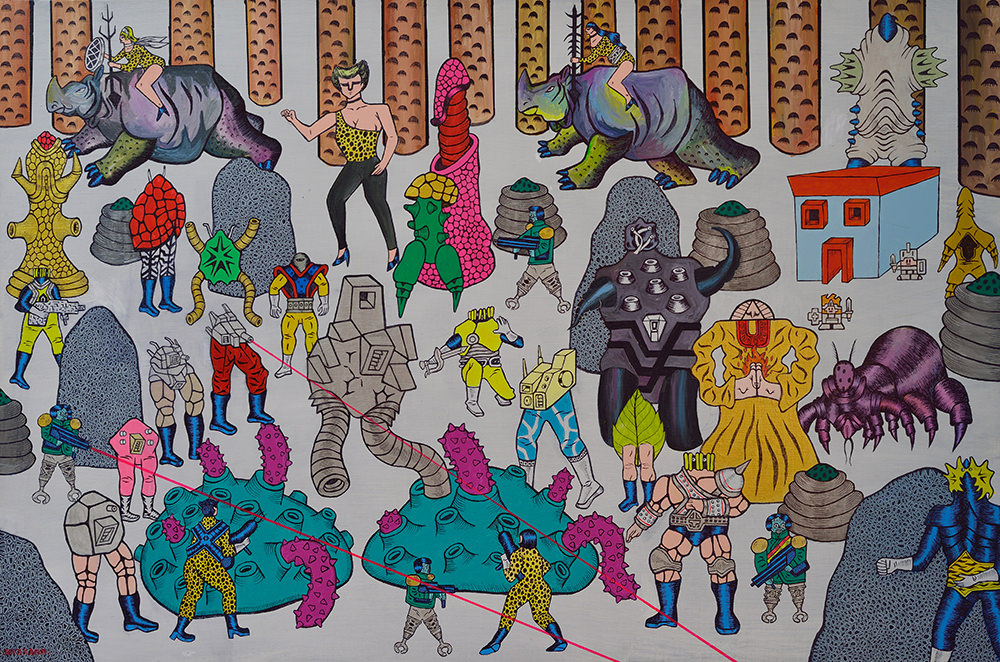Motohiro Hayakawa
By Soraia Martins
Funny story: whenever the time to write about something that is essentially visual arises, the lack of words grows bigger and undoubtedly shames the perpetrator of such a task. Time runs out and—still–nothing. This kind of struggle happens mainly due to a number of different factors, starting with the complexity of the work at hand and ending with our own personal opinion, which can easily end up screwing the article and turn it into a mushy, oversentimental statement. My role here is to bring you none of these to the table and still make you enjoy the subject, to mesmerize and charm your interest, and mostly to show you why you should definitely be checking out this Japanese wonder artist, sci-fi aficionado, Motohiro Hayakawa.
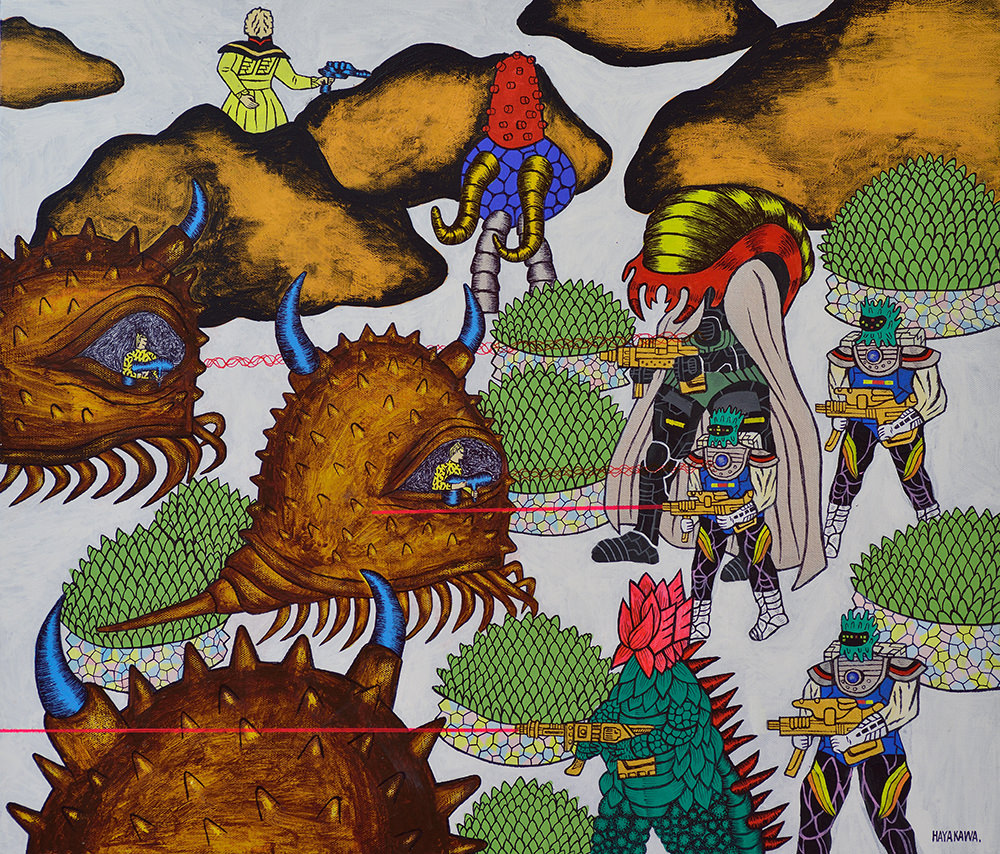
Born in the Yamaguchi Prefecture, Japan, in 1974, Motohiro Hayakawa was raised under several graphic influences that would later bring him to the place he is now regarded in art, illustration, and comics. Science fiction and cartoons were a massive part of his life, playing a paramount role in the way he draws and paints. TV shows of the 70s and the 80s were no strangers to his household: one of his most well-known works is a tribute to “Space Sheriff,” a TV show from the 70s, and you cannot really get enough of it: the intricacy, the attention to detail, the clear convolutedness of the traces. A narrative is born in each of his works and you can almost sense the fantasy crawling out and being brought into life right in front of you. Warriors, princesses, green men in space suits, and a whole lot of different creatures are a few of the characters you can count on.
Actually, this tribute I just mentioned, the one encompassing psychedelic sci-fi TV shows, specifically “Space Sheriff,” is perhaps the most renowned fact about Motohiro Hayakawa in all its glory: the TV show and the subsequent influence it had on him were the trigger for a much bigger side of his art, the background that prompted his vast battlefields filled with monsters, warriors, aliens, and a multitude of creatures fighting for survival.
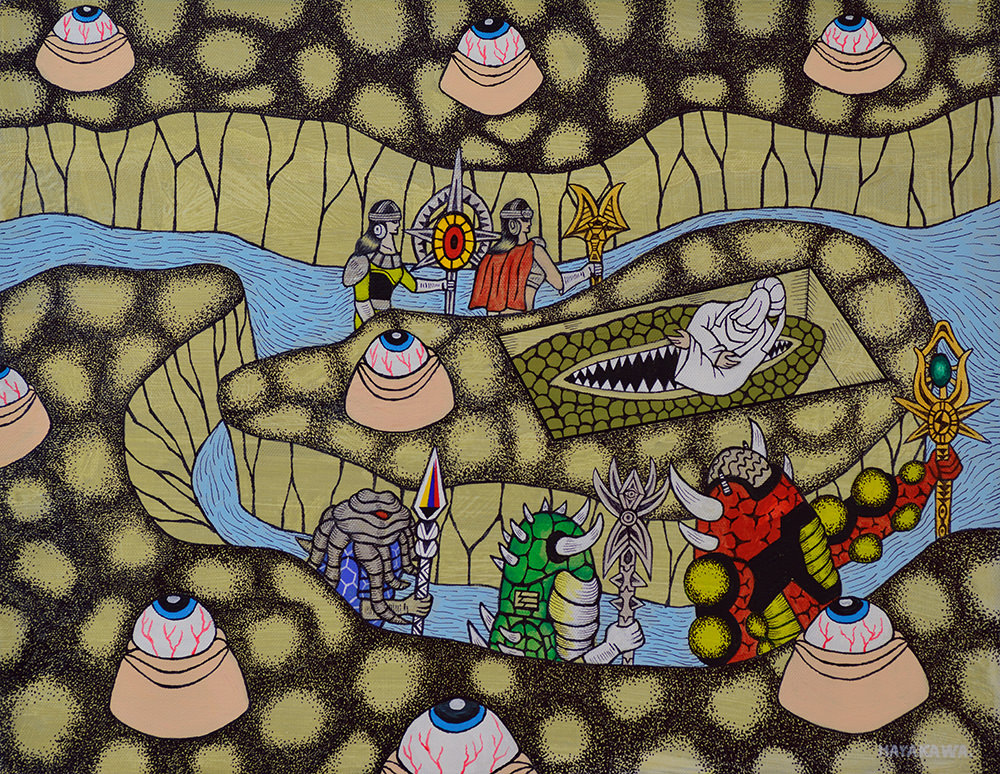
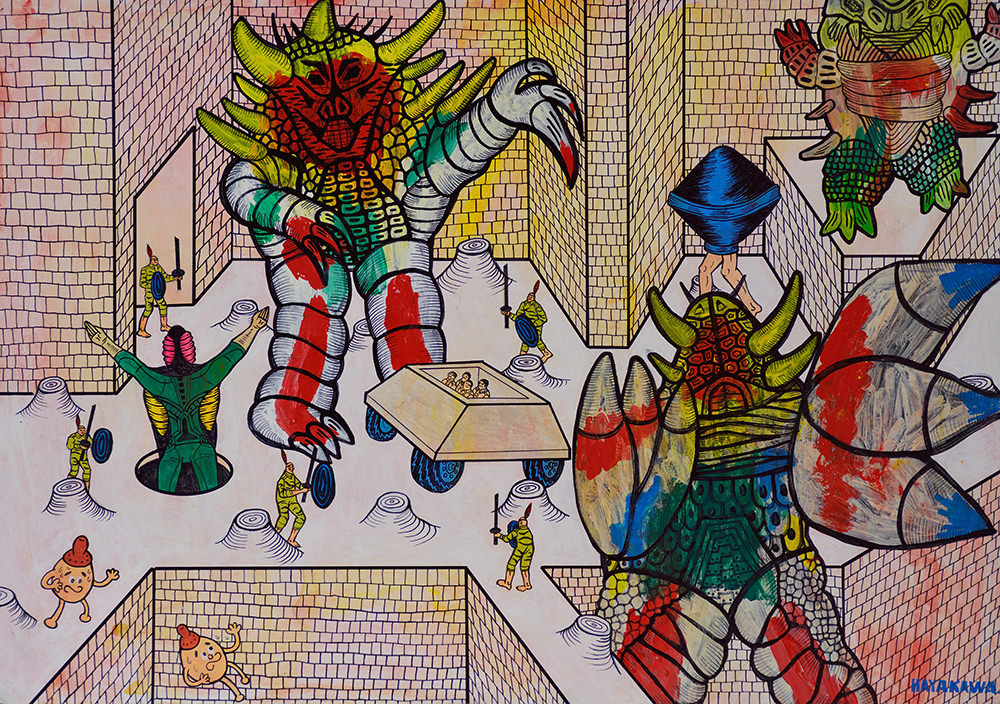
What truly is hypnotic is the fact that Motohiro Hayakawa does not seem to get tired of showing us what goes through his mind, although leaving it free to interpretation. How can he come up with such enthralling scenarios, jam-packed with small details, each and every one of them holding a purpose? He just does. To what extent is he depicting our global society, one can only imagine, but it would not be hard to believe. The cards are set. The portraits of fighting, debating, and discussing evil and harm are as much a part of the world we live in as they are matters of fantasized universes.
Motohiro Hayakawa is a member of the Tokyo Illustrators Society, which is somewhat a victory as far as the arts are concerned. The Tokyo Illustrators Society–or TIS–was established in 1988 and has now well over 200 members. This society, although not a secret one, intends to bring out the amazing talents behind the subject and serve as a platform for promotion and praise. TIS is well-known for being hands-on in the art scene in Tokyo, hosting a number of exhibitions, conferences, and much more. Better yet, since 1995, the name of the organization went higher up in the food chain by setting up exhibitions at the Creation Gallery G8, in Ginza, in the Marunouchi area, a high-roller specialist in fine arts and graphic design. In addition to this, TIS is ever more open to receive new artists and illustrators who desire to become “professionals in the field,” so to speak. The people behind this amazing initiative are administrative director Mizumaru Anzai, vice presidents Hiroyuki Izutsu, Jun Tsuzuki and Shinbo Minami, and acting director Sugio Yamazaki.
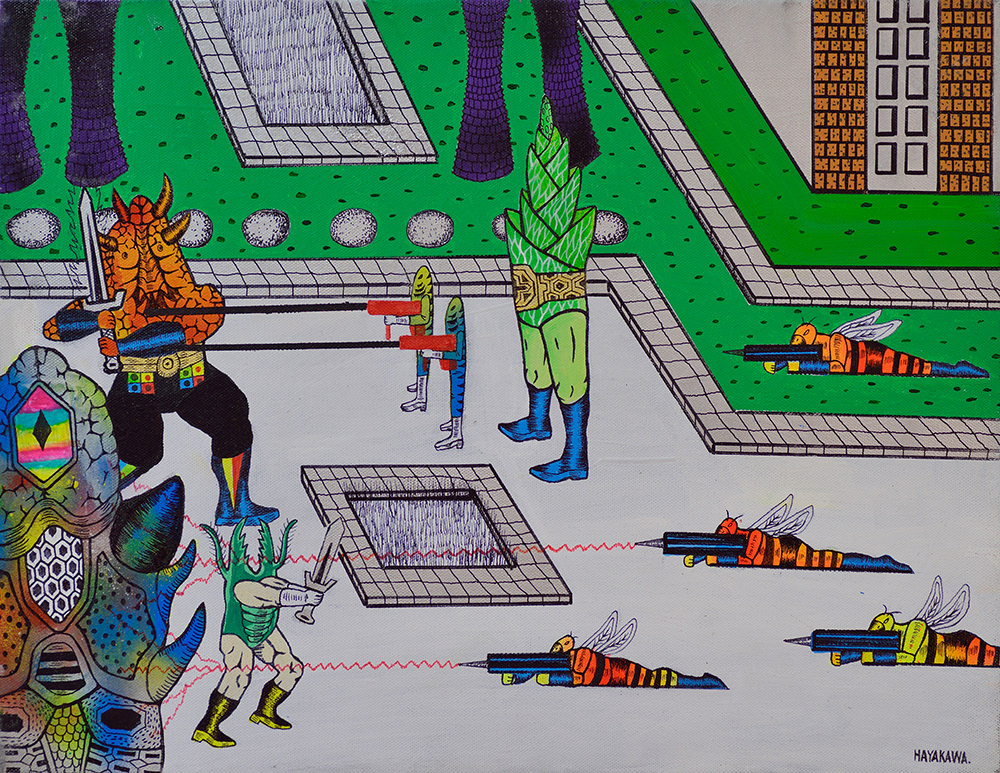
In December, falling through January, Motohiro Hayakawa held an exhibition in Madrid at the Watdafac gallery, an up-and-coming exhibit space open since 2012 in the 6th floor of a building located in the heart of the Spanish city. “MAKUU KUUKAN” was the reunion of a number of prints that both the artist and the gallery owner, Manuel Donada, agreed on including in the solo showcase. They almost did not get to the destination, but Donada was keen on making it happen no matter what, as he considers Hayakawa a genius. So, as we, mere readers and observers, Donada knew he was dealing with a person who just got into illustration four years prior and was already showing much more talent than he had recently seen. “MAKUU KUUKAN” is also the name of his limited edition publication, which gathers a variety of his artwork.
Before “MAKUU KUUKAN,” one could take a look at Motohiro Hayakawa’s work at several exhibitions around Tokyo, specifically in Billiken Gallery with “HEROES AND VILLAINS” (2012) and "Dai/U/Chu/Jin/Ten" (2012). "Shigeru Sugiura's Toto?" (2012) was held at the Morishita Culture Centre, also in Tokyo. “LASERBEAM” is the title of his latest release through Le Dernier Cri, a French publisher dedicated to screen-printed books produced in limited editions. Although he started only in 2009, he was already bestowed with an award, the Silver Award from the 9th Tokyo Illustrators Society Contest Society Contest.
We are certainly witnesses to a scene taken from a distant war in a well-hidden place no one can put his eyes on. Creatures battling for life and, of course, to death, carrying no danger for us, far-distanced viewers. Manuel Donada furthers states he believes Motohiro Hayakawa has been where no one has ever been. I could not agree more.
